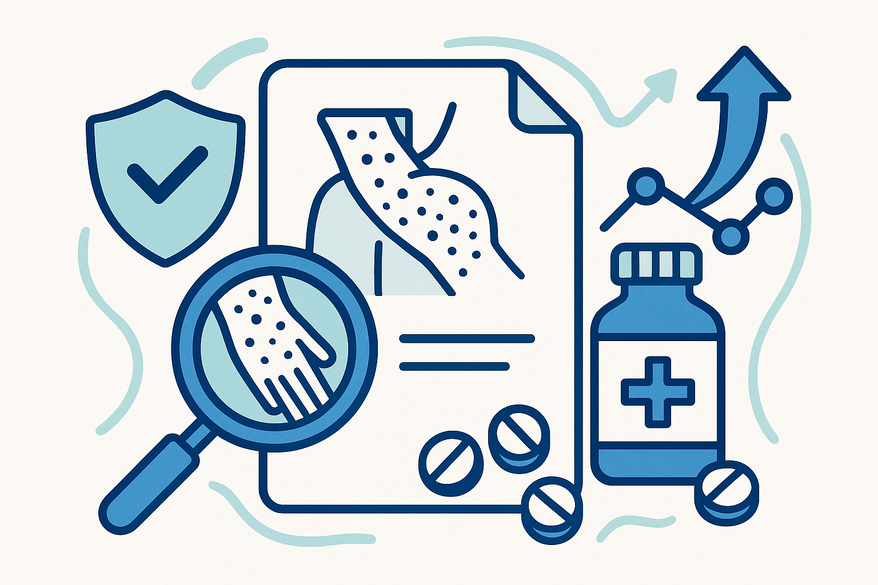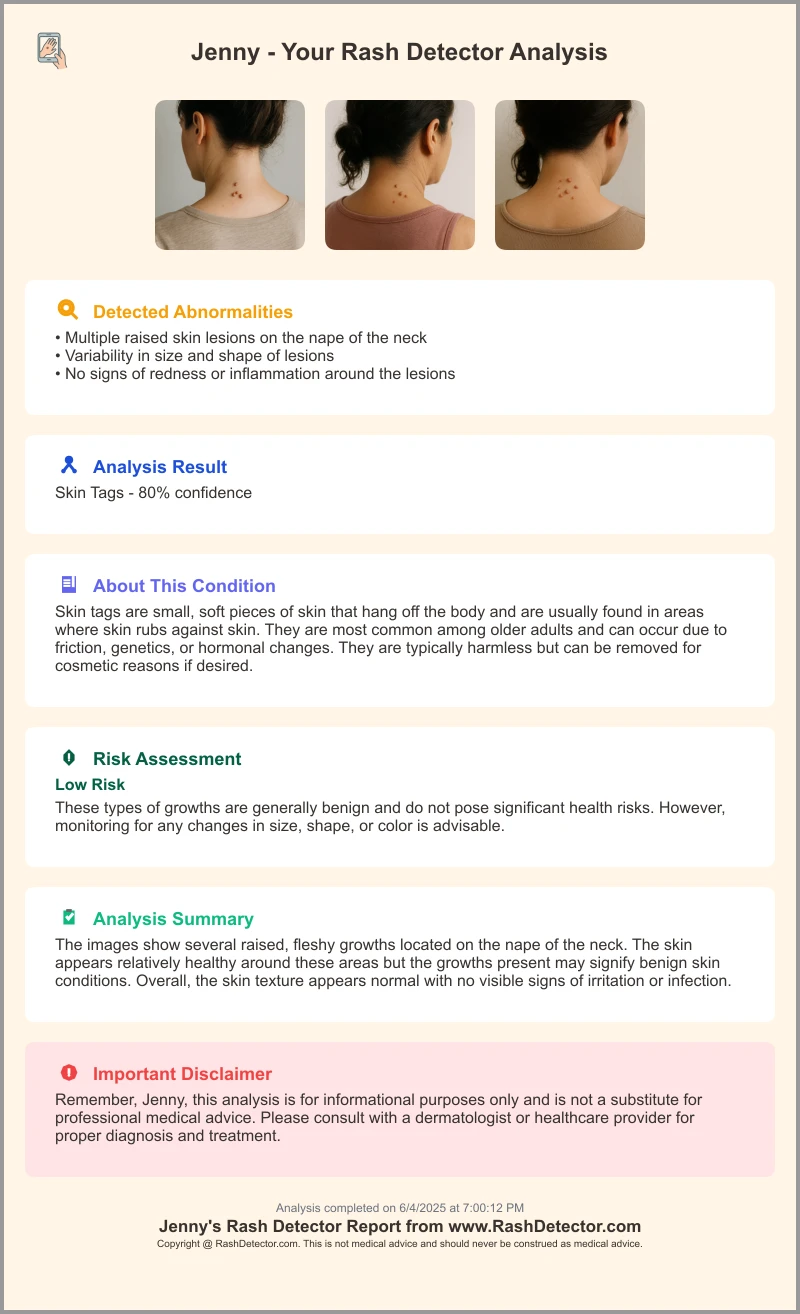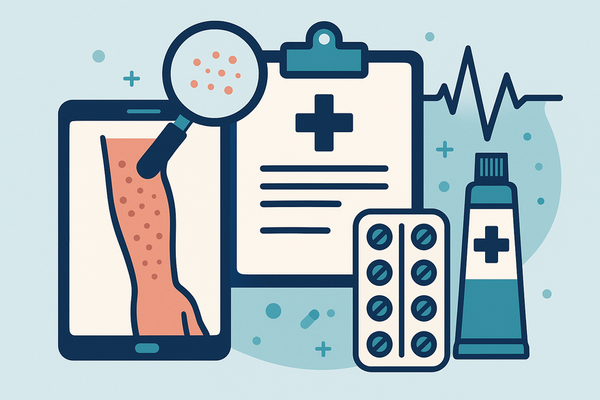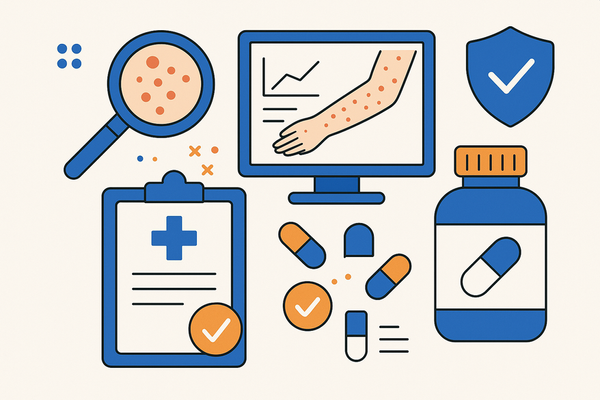Effective Medication Rash Treatment: How to Identify and Manage Drug-Induced Rashes
Discover treatment strategies for medication rashes, learn to diagnose and manage drug-induced reactions effectively with safety in mind.

Estimated reading time: 7 minutes
Key Takeaways
- Early recognition of drug-induced rashes—watch for redness, itching, hives, or blisters.
- Accurate diagnosis—track symptom onset, consult professionals, and use targeted tests.
- Tiered treatment approach—from at-home antihistamines and topical steroids to emergency care with epinephrine and hospital support.
- Prevention strategies—document allergies, use dose escalation, and maintain daily skin monitoring.
- Always consult your healthcare provider before starting or stopping any medication.
Table of Contents
- Introduction
- Section 1: What Is a Medication-Induced Rash?
- Section 2: Signs and Symptoms of a Drug-Induced Rash
- Section 3: Diagnosing Medication-Related Rashes
- Section 4: Treatment Strategies for Medication-Induced Rashes
- Section 5: Preventing Future Medication-Induced Rashes
Introduction
Medication rash treatment is essential when your skin reacts unexpectedly to a new drug. A medication-induced rash is an abnormal skin reaction triggered by a drug, often involving the immune system or direct toxicity. Common culprits include antibiotics, anticonvulsants, and NSAIDs. Knowing how to identify these reactions early, obtain a proper diagnosis, and choose the right therapy can prevent mild irritations from becoming serious complications. In this guide, we’ll walk you through recognizing signs, obtaining a diagnosis, exploring treatment options, and preventing future reactions, so you can manage drug-related skin reactions effectively with your healthcare provider.
Section 1: What Is a Medication-Induced Rash?
Keywords: medication rash treatment, drug-induced rash
Understanding how drug-related skin reactions occur is the first step in effective medication rash treatment. There are two main pathways:
- Immune-mediated (allergic) reactions
• Involve IgE-mediated pathways causing hives or angioedema.
• The immune system mistakes a drug or its byproducts as harmful.
• Signs include raised, itchy bumps and rapid swelling around the face or lips. - Non-allergic (toxic or side-effect) reactions
• Direct damage to skin cells by the drug or its metabolites.
• Leads to redness, peeling, or blistering without immune activation.
• Often dose-dependent and predictable based on the drug’s known effects.
Common culprit drugs:
• Antibiotics: penicillins, sulfa drugs
• Anticonvulsants: lamotrigine, carbamazepine
• NSAIDs: ibuprofen, naproxen
• Cancer therapies: targeted biologics, kinase inhibitors
For detailed symptoms per medication, see identifying drug-induced rash symptoms. Recognizing the mechanism helps guide treatment choices—from antihistamines for hives to stopping the drug for toxic effects.
Section 2: Signs and Symptoms of a Drug-Induced Rash
Keywords: medication rash treatment, serious drug reaction
Spotting a drug-related skin reaction early is critical. Typical symptoms include:
- Redness, itching, or warmth at the contact site
- Hives (urticaria) or raised bumps (wheals)
- Swelling of lips, eyelids, or tongue (angioedema)
- Peeling or blistering in severe cases (toxic epidermal necrolysis)
Mild vs. Serious Reactions
• Mild: confined redness or rash, slight itch, no fever—usually clears when the drug stops.
• Serious drug reaction:
– Difficulty breathing or wheezing
– Facial or throat swelling
– Widespread blistering or skin detachment
– Sores on mucous membranes
– Fever, chills, malaise—possible Stevens-Johnson syndrome or anaphylaxis
Early Detection Matters
• Prompt recognition can prevent progression to life-threatening complications.
• Monitor skin daily after starting any new medication.
• Report hives, swelling, or breathing difficulty immediately to a healthcare provider.
Section 3: Diagnosing Medication-Related Rashes
Keywords: medication rash treatment, drug allergy diagnosis
Getting the right diagnosis ensures you receive targeted treatment. Follow these steps:
- Self-Assessment Guidance
• Timeline tracking: Note when the rash began relative to a new drug.
• Symptom monitoring: Watch for systemic signs like mouth sores or fainting. - Role of Healthcare Professionals
• Medication history: List all current and recent drugs, including OTC and supplements.
• Physical exam: Evaluate skin, mucous membranes, and vital signs. - Possible Diagnostic Tests
• Blood work: CBC, liver and kidney panels.
• Skin biopsy: Small sample to confirm toxic epidermal necrolysis.
• Allergy tests: Skin prick or blood tests. - Red-Flag Scenarios (Seek Immediate Care)
• Airway compromise (stridor, wheezing)
• Hemodynamic instability
• Extensive skin detachment (>10% body surface)
• Rapid onset of systemic symptoms
Timely referral to dermatology or allergy specialists can be life-saving in severe reactions.
For convenient at-home monitoring, consider using the Skin Analysis App, which leverages AI to analyze your rash and generate a detailed sample report in seconds.

Section 4: Treatment Strategies for Medication-Induced Rashes
Keywords: medication rash treatment, over-the-counter antihistamines, corticosteroids
Effective treatment uses a tiered approach based on severity:
At-Home and Over-the-Counter Remedies
- Discontinue suspected drug under provider guidance.
- Oral antihistamines (cetirizine, diphenhydramine).
- Topical corticosteroids (hydrocortisone cream).
- Cool compresses and calamine lotion.
Prescription Interventions
- Oral corticosteroids: prednisone or methylprednisolone.
- Epinephrine autoinjector for anaphylaxis.
- Hospital support: IV fluids, oxygen, wound care for Stevens-Johnson syndrome.
Learn more about managing drug allergy rashes.
Alternative Therapies
- Drug desensitization protocols under specialist supervision.
- Graded drug challenge to confirm allergy status.
Medical Advice Reminder
Never stop essential medications without professional guidance. Report new symptoms promptly to adjust the treatment plan.
Section 5: Preventing Future Medication-Induced Rashes
Keywords: medication rash treatment, drug allergy screening, dose escalation
- Allergy Screening and Documentation
• Share known drug allergies with every provider.
• Consider skin prick or blood tests before high-risk drugs. - Dose Escalation Protocols
• Gradual dose increases for anticonvulsants.
• Start low and monitor skin reaction. - Ongoing Monitoring
• Check skin daily on new medications.
• Keep a medication and symptom diary. - Pharmacist Collaboration
• Review drug interactions and cross-reactivities.
• Ask about alternative formulations or safer classes.
Preventive strategies empower patients to recognize early warnings and avoid repeat reactions.
FAQ
What should I do if I develop a rash after starting a new medication?
Stop the medication under your provider’s guidance and seek medical evaluation. Early intervention prevents escalation.
How can I distinguish between mild and severe drug-induced rashes?
Mild rashes are localized and itch without systemic symptoms. Severe rashes have fever, blistering, mucosal involvement, or breathing difficulties.
Are there treatments I can do at home for mild medication rashes?
Yes—oral antihistamines, topical corticosteroids, cool compresses, and calamine lotion can relieve mild symptoms.
Can I ever reintroduce a drug that caused a rash?
Under specialist supervision, drug desensitization or graded challenge protocols may allow reintroduction if no alternatives exist.





